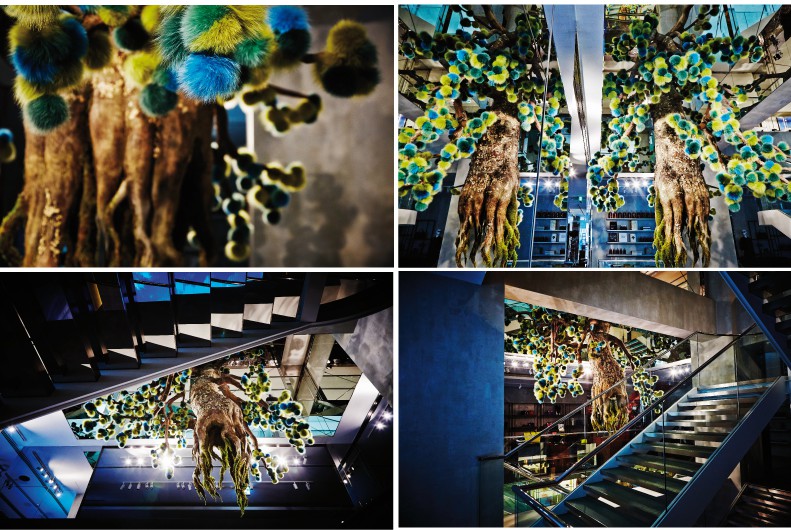TOKYO: Fendi showed us that flowers and trees are more than beautiful decoration when they transformed their Tokyo flagship store at Ginza into a green hot house and asked garden artist Azuma Makoto to create a living tree installation decorated with their signature fur puffs. Our guest editor Zoe Warncke from New York spoke to Azuma Makoto, who has his very own way with flowers and plants, making arrangements that are like beautiful, surreal pieces of art.
ZOE WARNCKE: When you start a project, what is your base?
AZUMA MAKOTO: I like to find expressions that even flowers or plants themselves have never imagined, as to stimulate people’s creativity and to continue pursuing a new possibility. I believe that it is my mission to heighten the value of their existence by “planting” flowers and plants into people’s minds.
There is one thing consistent in my expressions, which is an attempt to alternate plants and flowers into new values with my hands. Flowers and plants in nature are already beautiful and precious just as they are, so when I touch them, I tell myself that I am facing their sacred lives.
ZOE WARNCKE: Do you do mood boards or sketches before you start a project?
A.M.: Not always, but usually I sketch and blow up my imagination before creation.
ZOE WARNCKE: Where do you look for inspiration?
A.M.: Facing flowers and plants at all times gives me an inspiration to create new ideas. I take a walk every day near my office and atelier. When walking around, I catch subtle changes, seasonal transitions and the air of that day.
The speed of life in flowers and plants is different from that of humans; it is much more transient. There is a need to be sensitive to such tiny changes, such as moments of blooming and also withering. By keeping such refined antennae in myself, I think it relates to capturing a moment of beauty that flowers and plants display.
ZOE WARNCKE: Is there a rule when combining plants? I am thinking of colour and texture for example.
A.M.: There are no specific rules and it depends on what kind of plants I use. Someone has said that my work seems to show a darker side of what flower arrangement can be. I think that it is because I am always conscious of concepts of “life” and “death”. Every flower and plant has its own cycle; it blooms, withers and turns to manure for next lives. Whichever moment you take from the process from birth to death, its expression is rich and beautiful, and I believe that it attracts people’s mind without fail. Life and death exist next to each other, and I think that is where beauty comes from. I continue to confront flowers in order to capture the ultimate beauty.
ZOE WARNCKE: How would you describe the relationship towards plants and flowers in the western world in comparison to the eastern world?
A.M.: I basically think humans love flowers regardless of their religion, race, language, sex etc., but I feel western people are familiar with plants and flowers as if they are “friends,” so everyone enjoys gardening, it’s very casual. On the other hand eastern people, especially the Japanese, worship nature, seeing it more like “God” sometimes. So nature is a very noble existence for us. It is one of the deference between those two areas.
ZOE WARNCKE: Which place in the world is for you the most inspiring, botanical-wise?
A.M.: It’s always a plant that inspires and gives me new ideas, every place has original values.


